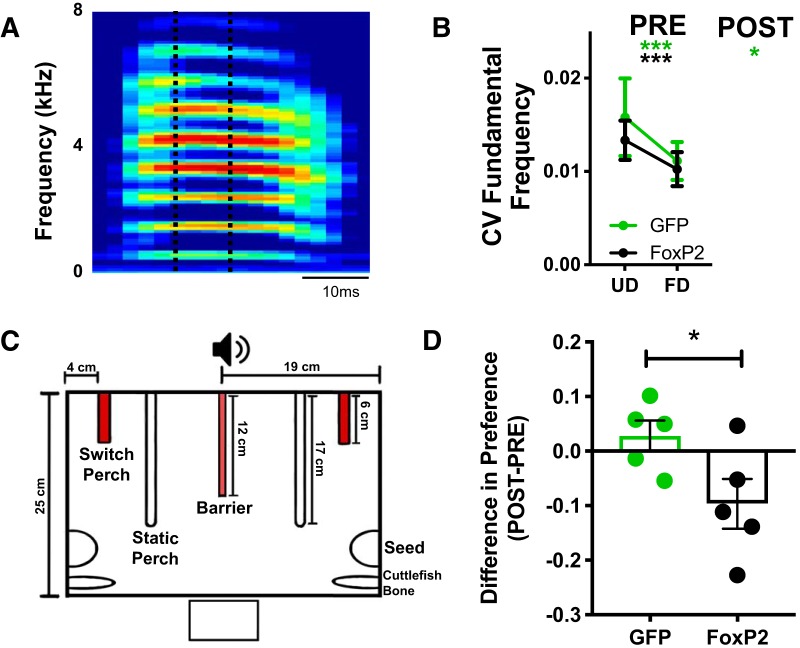Figure 5.
Female conspecifics perceive alterations in social context-dependent song variability. A, Exemplar syllable with a harmonic element/stack. Only the “flat” component of the syllable (indicated by dotted lines) was analyzed to determine the CV of the FF. B, Before AAV injections, syllables are performed with less rendition-to-rendition variability during female-directed song compared to UD in both GFP and FoxP2 groups (Wilcoxon matched-pairs signed-rank test, one-tailed; AAV-GFP: p = 0.0002, n = 12 syllables, AAV-FoxP2: p = 0.0001, n = 13 syllables). Following AAV injection, the CV of FF is significantly lower for female-directed syllables in GFP-injected zebra finches (Wilcoxon matched-pairs signed-rank test, one-tailed, p = 0.017, n = 12 syllables), but not in FoxP2-injected animals (Wilcoxon matched-pairs signed-rank test, one-tailed, p = 0.064, n = 13 syllables; *p < 0.05, ***p < 0.001). C, “Bird’s eye view” schematic of the testing arena for assaying female preference. D, Female preference for FD song is reduced (PreferencePOST – PreferencePRE) following FoxP2 overexpression compared to songs following GFP overexpression (two-tailed t test, p = 0.047, t = 2.34, df = 8, n = 5 male birds per group). Figure Contributions: Taylor Hobbs designed the female preference testing area. Taylor Hobbs and Nancy Day performed the female preference experiments and analyzed the data.

